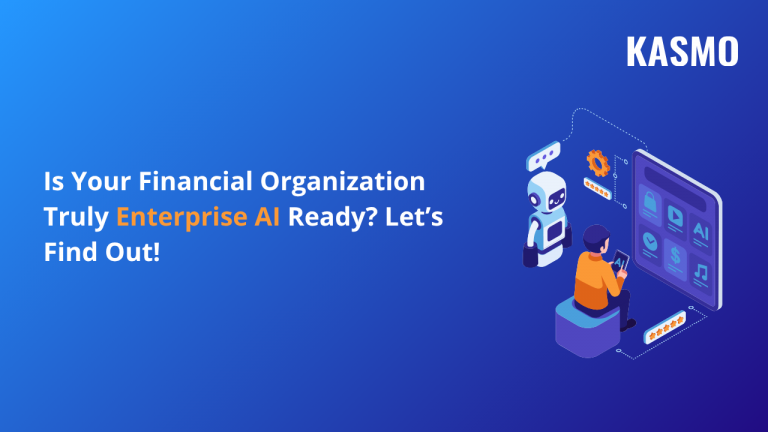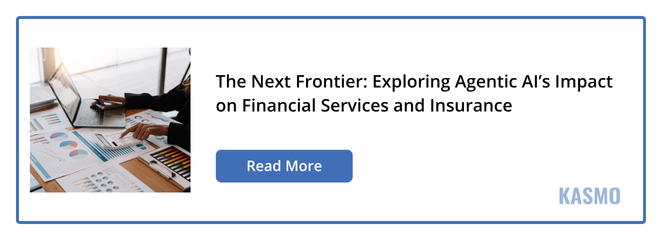Introduction
The financial services industry is undergoing a massive AI-powered evolution. It is being implemented for several functions like risk assessment, claims management, fraud detection, and personalized customer experiences. According to Gartner, by 2030, agentic AI will autonomously make at least 15% of daily decisions, and 70% of finance functions will use AI for real-time decision-making. These analytics show the importance of data-driven intelligence in the finance sector.
While many financial organizations recognize the transformative potential of AI, most struggle to build one for themselves. The challenge isn’t a lack of technology; it’s AI-readiness. Getting your enterprise AI-ready requires a solid data foundation, robust governance, and a strategic approach to integrating AI across every business function. Businesses can achieve these goals efficiently using Snowflake. It is a single platform for unifying fragmented data, enabling seamless collaboration, and powering intelligent decision-making. The journey to AI readiness starts when financial organizations rethink how to manage, govern, and use their data.
In this blog, we explore what it really takes to make your organization enterprise AI-ready. Starting from overcoming challenges to building a unified data and AI strategy, and how Snowflake’s AI Data Cloud empowers financial businesses in this journey.
Why Most Financial Services Aren’t AI-Ready Yet?
Though AI has potential advantages in enhancing financial organization, most still struggle to fully operationalize it across the enterprise. This isn’t due to a lack of data or technology; it’s a lack of readiness. Becoming truly Enterprise AI-ready demands a strong data foundation, governance, and AI strategies. 
Fragmented and Siloed Data
Financial organizations manage vast amounts of sensitive data from customer profiles and credit histories to transaction records and claims information. This data is often scattered across multiple, disconnected systems. Siloed data prevents a unified view of customers, and AI models cannot identify patterns or provide accurate insights. Even an advanced AI system fails due to poor and fragmented data.
Legacy Systems and Technology
Many institutions still rely on legacy systems that cannot handle AI workloads or large-scale data processing. These systems create bottlenecks and limit scalability. Integrating modern AI capabilities with outdated data systems increases complexity, cost, and risk. To enable enterprise AI adoption, financial organizations need to move from these legacy systems.
Lack of Governance and Compliance
The financial sector operates under strict data privacy and regulatory requirements. These governance practices often vary across departments, leading to inconsistency and risk exposure. Inadequate data lineage, unclear ownership, and non-standardized policies make it difficult to ensure compliance while enabling AI innovation.
Skill and Expertise Gaps
Along with technology, AI transformation requires skilled expertise. Many financial institutions face a shortage of AI-literate talent and a lack of awareness about AI approaches and capabilities. Without upskilling and change management, the development and deployment of AI initiatives is difficult.
Focus on Projects, Not Platforms
Many organizations start with isolated AI pilot projects that show promise but fail. This happens because there’s no standardized framework for operationalizing models or integrating them with enterprise systems. A successful AI strategy is possible with a unified platform that supports automation, scalability, and business outcomes.
The Foundation of Enterprise AI is Data and AI Strategy
AI is only effective when provided with proper and quality data. So, financial organizations must first build a resilient and intelligent data foundation. Data-driven leaders need to ingest, organize, and activate both structured and unstructured data.
Structured Data
Structured data consists of spanning transactions, account details, market feeds, loan records, and customer profiles. Integrating this vast volume of information efficiently and securely across business units and external partners is challenging. To establish a strong, structured data foundation, financial institutions should:
Shorten Data Pipelines: Simplify data engineering by supporting batch and real-time data streaming, ensuring faster and more reliable access to insights.
Break Down Data Silos: Foster collaboration across lines of business by building an interoperable data architecture that unifies customer, operational, and market data.
When structured data is efficiently managed and accessible, it becomes the single source of truth that fuels every enterprise AI initiative.
Unstructured Data
While structured data provides a strong operational advantage, unstructured data provides a true intelligence layer for AI models. Generative AI and Large Language Models (LLMs) depend heavily on unstructured data like emails, customer reviews, claims reports, etc. For most financial organizations, these massive reservoirs of unstructured information remain untapped, scattered across systems in formats like PDFs, voice recordings, and free-text fields. Unstructured data can be effectively used by applying NLP and machine learning techniques to categorize, tag, and contextualize this data.
Modern Data Platforms
To bridge the gap between structured and unstructured data, financial organizations need a modern, unified data platform that can manage both types with agility, governance, and scalability. Snowflake’s AI Data Cloud is purpose-built for this data integration. It provides a single, secure environment to manage diverse datasets. Zero-Copy data sharing helps to collaborate easily without duplication. These help to eliminate fragmentation and accelerate AI development for enterprises.
AI: Turning Data into Intelligent Action
Once the data foundation is established, AI becomes capable of turning insights into outcomes. AI in financial services helps analyze massive datasets to detect risks, personalize experiences, and automate operations. But the real advantage lies in deploying AI strategically across functions to create measurable enterprise value.
AI Integration into Core Financial Workflows
AI must be embedded directly into decision-making systems. Snowflake’s Snowpark and Cortex can build, train, and deploy models directly within the data ecosystem, enabling real-time intelligence across credit scoring, fraud prevention, and investment management workflows.
Build Trusted Models
For Enterprise AI to succeed, building a trusted model is essential. LLMs and AI copilots used in financial contexts, from customer service assistants to compliance bots, must be reliable, interpretable, and accurate. Regular monitoring and testing help to improve your AI model and gain trust.
How to Make Your Financial Organization Enterprise AI Ready Using Snowflake
The five essential steps that help financial businesses become an Enterprise AI-ready are-
Clear AI Strategy and Vision
Start with a clear, organization-wide AI strategy and vision. Define why they are investing in AI, where it will create the most value, and how it aligns with business goals such as risk reduction, fraud detection, or operational efficiency. This begins with assessing the current data and analytics maturity, identifying high-impact AI opportunities, and setting measurable outcomes. The strategy also includes budgeting, timelines, measurable KPIs, and compliance factors.
Modernize and Unify Your Data Foundation
The first step is to build a modern, unified data foundation that integrates structured and unstructured data from across the enterprise. Snowflake’s AI Data Cloud helps to manage data across CRMs, core banking systems, and regulatory feeds. It also enables real-time data sharing across teams and third-party partners using Zero-Copy sharing. A unified data architecture eliminates duplication, reduces latency, and provides a single source of truth.
Integrate AI into Business Processes
With a strong data and AI foundation in place, financial institutions can now deploy targeted, high-impact AI initiatives. Start by identifying use cases that align with strategic priorities and business goals. For example, financial services can use AI in credit risk modeling and underwriting for faster and more accurate loan decisions or fraud detection for real-time anomaly analysis. Using Snowflake’s AI Data Cloud, banks can seamlessly integrate real-time data from multiple systems, enabling more accurate and timely insights for AI-driven solutions.
Establish Data Governance and Compliance
Data integrity and security are the key factors for responsible AI adoption. A well-defined data governance and compliance strategy ensures that data is secure, auditable, and ethically used. With Snowflake, financial services can embed governance using Role-based access control (RBAC) and data masking to manage sensitive financial information. Enable end-to-end data lineage and auditing to meet regulations like GDPR, GLBA, and other guidelines. This strong governance approach builds the trusted foundation required for responsible AI adoption.
Build a Culture of AI Literacy and Trust
Technology adoption succeeds only when people trust and understand it. Financial organizations require a fundamental shift in culture, skills, and mindset. Investing in AI expertise can effectively use their data and AI to drive business impact. With Snowflake’s unified data foundation, cross-functional teams can easily collaborate, experiment with models, and access real-time data. Financial leaders must invest in upskilling programs, empower employees on how to interpret, validate, and act on AI insights responsibly.
When teams understand and believe in AI’s role, the enterprise can do much better and accelerate AI adoption across functions.
Conclusion
Building an Enterprise AI-ready financial organization is a prolonged and complex process. It is a collaborative journey to connect data, technology, people, and governance seamlessly. Using Snowflake makes it simpler and easier by offering advanced solutions like Data Cloud, Snowpark, Cortex Analyst, etc. By modernizing their data foundation, embedding AI into business processes, and promoting AI literacy and trust, financial services can become AI-ready.
As a Snowflake Premier partner, Kasmo brings deep experience in implementing data and AI solutions that enable financial institutions to adopt Snowflake AI Data Cloud. Kasmo helps organizations modernize legacy systems, unify structured and unstructured data, and establish a governed, scalable, and secure data foundation for AI adoption. This helps in AI transformation, maximizes ROI, and gains measurable business value.




